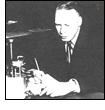 Crash Ryan
Crash Ryan
During the 1950s, it was the research of Dr. James Ryan that first showed the effectiveness of seat belts and other car safety measures in saving lives. He invented the retractable seat belt and other car safety measures that helped saved lives. But he didn't stop there.
Listen
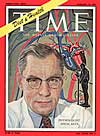 Ancel Keys Ancel Keys
The University of Minnesota has produced its share of notable research achievements. Among them, the K-rations that fed tens of thousands of GIs in World War II. Many of these achievements came from one man.
Listen
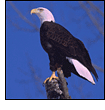 The Raptor Center The Raptor Center
The rebound in the number of birds of prey is due in part to the work of a small branch of researchers and volunteers at the University of Minnesota.
Listen
Raptor Center Web site.
 A Subterranean Landmark A Subterranean Landmark
The architecture on the Twin Cities Campus of the University of Minnesota ranges from the traditional Northrup Auditorium to the modern Weisman Art Museum. But neither of these structures has a periscope. One building does.
Listen
 A Land Grant University
A Land Grant University
The University of Minnesota is a "land grant" school, which places it among a group of unique institutions of
higher learning in the U S.
Listen
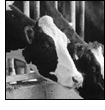 The Holstein Connection The Holstein Connection
Think Holstein and you should think University of Minnesota. The U of M played a key role in the evolution of the ubiquitous black-and-white dairy cow.
Listen
 Taconite's Birthplace
Taconite's Birthplace
Until 1943, taconite was considered a waste product of Minnesota iron mining.
Then University of Minnesota engineer Edward W. Davis developed the process to refine the low-grade ore into the iron pellets that would mean jobs for thousands of Minnesotans.
Listen
 Goldy Chipmunk Goldy Chipmunk
In a state that is home to such noble creatures as the eagle, the loon and the black bear, it's a fair question to ask: How did the
gopher become the mascot of the University of Minnesota?
Listen
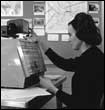 Telemetry U
Telemetry U
The telemetry collar is a vital tool in wildlife research. Developed by researchers at the University of Minnesota, telemetry collars help biologists track wolves, bears and virtually any species.
Listen
|